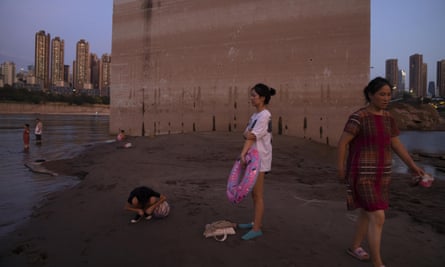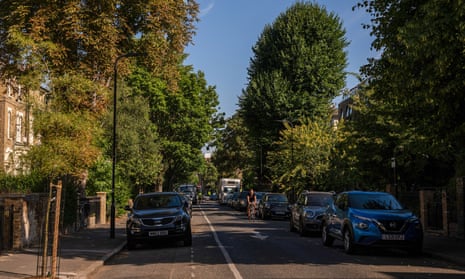Urban greening initiatives such as planting street trees, rainwater gardens and de-paving can help mitigate the impacts of urban heating due to the climate crisis and urban expansion, according to a study that has found cities have been warming by 0.5C a decade on average.
Scientists at Nanjing and Yale Universities analysed satellite data from across 2,000 cities and compared surface temperature readings between cities and rural areas from 2002 to 2021.
The study found on average that cities are warming by a rate of 0.56C a decade during the day and 0.43C a decade at night. In comparison, rural areas are warming by 0.4C a decade during the day and 0.37C a decade at night, which means urban areas are on average warming 29% more quickly than rural areas.
The scientists found a link between a city’s size and the rate of urban warming, with megacities warming on average by 0.69C a decade during the day, compared with 0.41C a decade during the day in smaller cities.
There were also disparities in the rates of urban heating between continents, with cities in Asia – the continent with the most megacities – warming most rapidly during the day and night. Cities in Europe were found to be warming the least during the day, while cities in Oceania were warming the least at night.

In about 90% of the cities surveyed, scientists found the climate crisis is the greatest contributor to urban warming, with about 0.3C of heating a decade attributed to human-induced climate change on average. However, scientists noted that urban expansion can also influence urban heating – in parts of China and India, rapid urbanisation is contributing to about 0.23C of urban warming a decade.
But urban greening schemes such as tree planting, in which exposed land surfaces are replaced with natural vegetation, can help reduce the rate of urban warming by producing a cooling effect particularly at night, by capturing some of the surrounding surface heat for storage, according to the report.
In Europe, urban greening has been found to offset the rate of urban warming by 0.13C a decade on average. Likewise in Chicago, an urban greening scheme to increase tree coverage after a heatwave in 1995 has helped to decrease the rate of urban warming by about 0.084C a decade.
after newsletter promotion
The authors of the study published in the journal Communications Earth & Environment have urged policymakers to consider using urban greening schemes to reduce urban warming, calling it an effective strategy that can reduce the impact of the “urban heat island” phenomenon, hence reducing the risk of exposure to future heatwaves that are much more likely to impact cities.
Jon Burke, the climate change manager at Gloucestershire council, suggested a number of greening initiatives such as rainwater gardens that can make a real difference to urban heating. He said vegetation had “a big role to play in moderating all the types of urban heating” and could bring additional social benefits such as “reduced crime and prescriptions for antidepressants”.
UK urban leaders should have taken green infrastructure investment more seriously a decade ago, he said, adding that at present “there isn’t one urban area within the UK with average canopy street cover above 40%”, which is the minimum amount of cover needed for a cooling effect to take place.
Burke said leaders needed to “initiate an urgent race” to prevent further damage from heatwaves and floods in cities, adding that there were few better investments a city could make in the health and security of its residents than urban greening.
Grahame Madge, a Met Office spokesperson, said the organisation’s “high-resolution projections” are helping local authorities to better understand the impact of extreme heat in cities.
He said: “The Met Office has been working with a number of local authorities to help inform their heat resilience strategies and planning. When they combine this information with their own mapping they gain a far clearer picture of where the areas of greatest risk are across the city … this ability to know where to focus effort is extremely important.”
